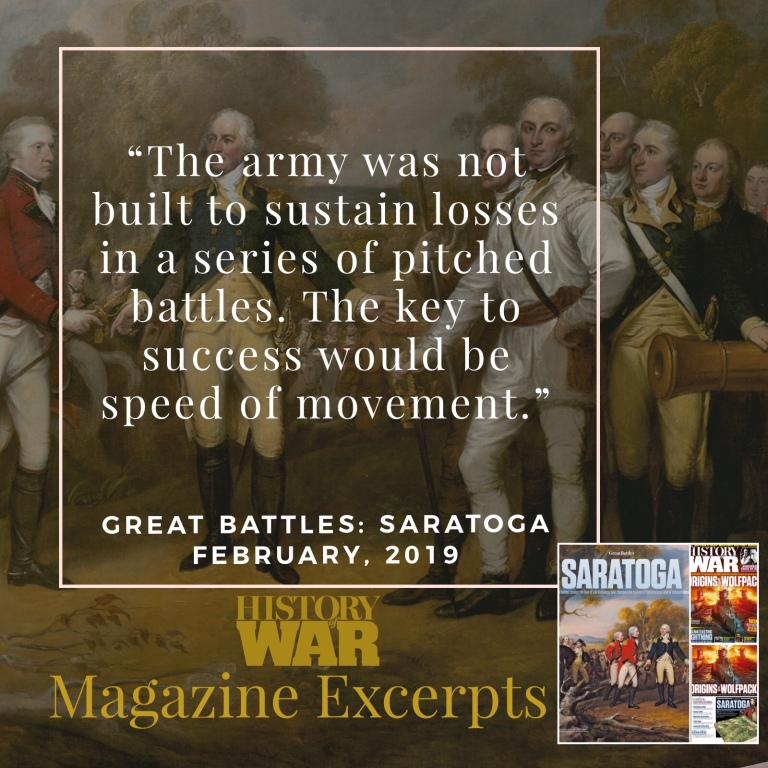
“Burgoyne was confident of making rapid progress and seemed to view a supporting army from the south as optional, rather than essential. He would have around 10,000 men with him, although only 4,000 of those would be regular British troops and the vast majority of the redcoats would be inexperienced. With almost 4,000 hired German soldiers, known collectively as ‘Hessians’, and a smattering of Native Americans and Canadian labourers, the army was not built to sustain losses in a series of pitched battles. The key to success would be speed of movement. Opposing Burgoyne’s march was an American army under Philip Schuyler. The makeup of this ‘Northern Army’ would change over the duration of the campaign, especially with the coming and going of militia units. Largely derided by the British (and even American commanders despaired their unreliability), militia units were well suited to the territory through which Burgoyne would be marching. Ambushes, hitand-run tactics and the destruction of roads could make life miserable for the British army.” The excerpt is from Great Battle article on the Battles of Saratoga in the UK magazine, History of War (February, 2019). Saratoga is known for being the turning point of the American Revolution. In 1777 −− the second year of America’s War for Independence −− the British sought to quell the rebellion with a single decisive military campaign. The article says “the plan was for two British armies to work their way along the Hudson – one marching south from Canada, the other marching north from New York.” The British plan depended on using an invading army to divide the colonies along a natural corridor of rivers and lakes stretching from Canada to New York City. The article describes how the British were outwitted and outmaneuvered in this critical Revolutionary War clash. “An army that had envisaged little difficulty in marching to Albany had been reduced to a small scale operation in a desperate search for provisions.” The Americans’ determined resistance at Saratoga, coupled with British strategic blunders, resulted in a stunning defeat and surrender for a British army. This timely victory reversed American military fortunes, boosted patriot morale, and gained them international recognition and support, including military assistance. The Saratoga region is fortunate to be the subject of this Great Battle article. Articles in publications like History of War get the word out internationally about our community. These articles provides creditably to the story about the importance of the Battles of Saratoga and that our community is worth visiting. The best place to learn more about the epic Battles of Saratoga is to visit the Saratoga National Historical Park in the towns of Saratoga and Stillwater. The park website is at https://ift.tt/N6OH53T miles north of the battlefield are three sites, located in the villages of Schuylerville and Victory, which are also part of Saratoga National Historical Park. The Schuyler House is the 1777 country home of General Philip Schuyler, a businessman, politician, and entrepreneur, and father-in-law to Alexander Hamilton. Schuyler constructed this home within weeks after the retreating British burned his earlier estate on the property. Nearby is the Gothic style 155-foot tall Saratoga Monument, which hardy visitors can climb for panoramic views of numerous mountain ranges. Then there is Victory Woods, where a fully accessible boardwalk trail passes through the area where the British made their “last stand” during a siege before surrendering. While in Schuylerville you can walk along the historic Champlain Canal, visit art galleries, and dine in variety of eateries.